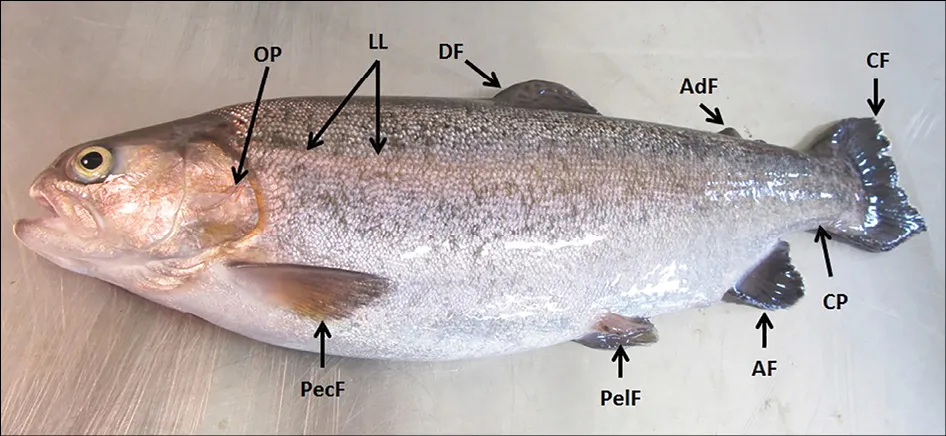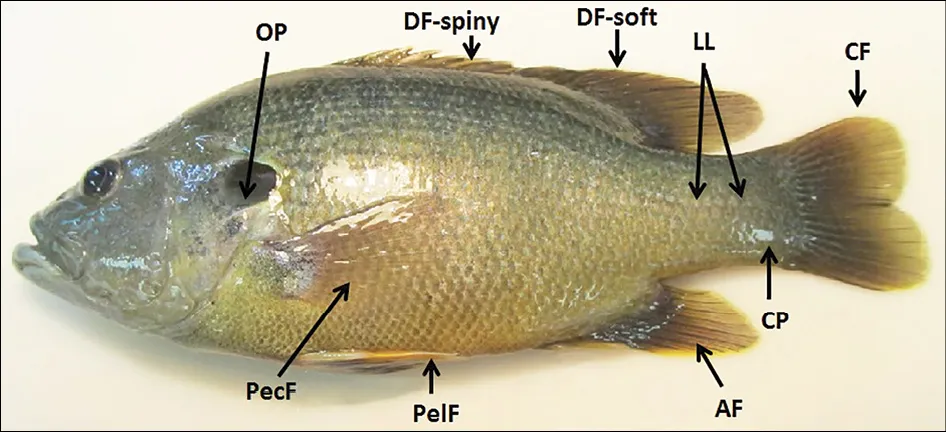
eBook - ePub
Fish Diseases and Medicine
Stephen A. Smith, Stephen A. Smith
This is a test
Buch teilen
- 328 Seiten
- English
- ePUB (handyfreundlich)
- Über iOS und Android verfügbar
eBook - ePub
Fish Diseases and Medicine
Stephen A. Smith, Stephen A. Smith
Angaben zum Buch
Buchvorschau
Inhaltsverzeichnis
Quellenangaben
Über dieses Buch
Fish are critically important to the welfare of this planet and its occupants, the health of both wild and captive fish populations paramount to our survival. This book presents the gross pathology of the most commonly encountered diseases and syndromes of fish in an organ system-based approach. It provides an overview of the di
Häufig gestellte Fragen
Wie kann ich mein Abo kündigen?
Gehe einfach zum Kontobereich in den Einstellungen und klicke auf „Abo kündigen“ – ganz einfach. Nachdem du gekündigt hast, bleibt deine Mitgliedschaft für den verbleibenden Abozeitraum, den du bereits bezahlt hast, aktiv. Mehr Informationen hier.
(Wie) Kann ich Bücher herunterladen?
Derzeit stehen all unsere auf Mobilgeräte reagierenden ePub-Bücher zum Download über die App zur Verfügung. Die meisten unserer PDFs stehen ebenfalls zum Download bereit; wir arbeiten daran, auch die übrigen PDFs zum Download anzubieten, bei denen dies aktuell noch nicht möglich ist. Weitere Informationen hier.
Welcher Unterschied besteht bei den Preisen zwischen den Aboplänen?
Mit beiden Aboplänen erhältst du vollen Zugang zur Bibliothek und allen Funktionen von Perlego. Die einzigen Unterschiede bestehen im Preis und dem Abozeitraum: Mit dem Jahresabo sparst du auf 12 Monate gerechnet im Vergleich zum Monatsabo rund 30 %.
Was ist Perlego?
Wir sind ein Online-Abodienst für Lehrbücher, bei dem du für weniger als den Preis eines einzelnen Buches pro Monat Zugang zu einer ganzen Online-Bibliothek erhältst. Mit über 1 Million Büchern zu über 1.000 verschiedenen Themen haben wir bestimmt alles, was du brauchst! Weitere Informationen hier.
Unterstützt Perlego Text-zu-Sprache?
Achte auf das Symbol zum Vorlesen in deinem nächsten Buch, um zu sehen, ob du es dir auch anhören kannst. Bei diesem Tool wird dir Text laut vorgelesen, wobei der Text beim Vorlesen auch grafisch hervorgehoben wird. Du kannst das Vorlesen jederzeit anhalten, beschleunigen und verlangsamen. Weitere Informationen hier.
Ist Fish Diseases and Medicine als Online-PDF/ePub verfügbar?
Ja, du hast Zugang zu Fish Diseases and Medicine von Stephen A. Smith, Stephen A. Smith im PDF- und/oder ePub-Format sowie zu anderen beliebten Büchern aus Medicine & Veterinary Medicine. Aus unserem Katalog stehen dir über 1 Million Bücher zur Verfügung.
Information
Chapter 1
Anatomical Physiology of Fish
Christine L. Densmore
As veterinarians and animal health professionals, we are trained to deal with a very diverse group of creatures. We receive formal training in the life history, physiology and medicine specific to a wide variety of animals, and we address these differences by subdividing the field in a phylogenic approach that is largely species based. When approaching a case, we generally think in terms of canine, feline, equine, bovine, etc. medicine, and the differential diagnoses, diagnostic options, and therapeutic regimes and doses are recalled and considered based on those types of categorizations. Other groupings of animals may be approached by the typical veterinary practitioner with an even broader perspective. For instance, small mammal medicine incorporates many mammalian orders, including species of rodents, lagomorphs and mustelids, whereas avian medicine covers an entire class of the phylum Vertebrata. Given this perspective, piscine medicine can present even greater challenges in terms of physiological and morphological diversity among the subject matter and the patients. “Fish” span three classes of vertebrates and represent well over 33,000 individual species, more species than are contained in all the other classes of vertebrates combined. The life spans of fish can be measured in days in some instances or may exceed a century in others. The habitat of a fish may be an isolated pool of water in a desert climate or the deepest unexplored region of the ocean floor. Adult sizes among fish species range from less than 1 centimeter to approximately 15 meters in total length. Diversity among fish is truly amazing.
Looking up the word “fish” in a dictionary, one is likely to find a definition that describes a cold-blooded, limbless animal that is covered with scales, lives exclusively in water, and obtains oxygen from that water through its gills. Although this is generally accurate, there are a number of fish species that defy one or more of each of these descriptors. So how may we accurately define a fish? Taxonomically, they are members of the subphylum Vertebrata and one of three classes or superclasses of vertebrates: Agnatha (jawless fish like the lamprey), Chondrichtyes (cartilaginous fish including the sharks, skates, and rays, also known as elasmobranchs) or Osteichthyes (bony fish that include the majority of the more familiar species). They all have gills throughout their entire lives and generally live exclusively in (or at least rely heavily upon) an aqueous environment. Some like the arapaima, snakehead and some catfish actually do breathe air to the point that they may survive for a time out of water. Fish are generally motile, utilizing fins and lateral undulation to help with locomotion through water and, in rare cases with a few species, on land or other firm substrate. Most fish are ectothermic, or cold-blooded, with their body temperature solely dependent upon the environmental temperature. There are, however, noted exceptions that maintain their body temperature above environmental temperature including large pelagic species like the bluefin tuna (Thunnus thynnus) and deep-diving species like the opah (Lampris sp.).
This overview of anatomic physiology therefore cannot begin to cover the immense diversity of form and function that is found among fish. Instead, this chapter will endeavor to highlight the major consistencies and differences that are evident in the anatomy and physiology of those fish most likely to be encountered by the veterinarian or biologist working in the realm of aquatic animal health. The majority of this chapter will describe teleost fish, members of the infraclass Teleostei that includes bony fish with protrusible upper jaws, as these represent the majority of species commonly encountered in clinical or research settings. Attention will also be given to the more commonly encountered non-teleost fish including other bony fish like lungfish, sturgeons, and gars as well as the elasmobranchs.
External anatomy
Collectively, fish provide an excellent illustration of how in the biological sciences, form follows function. Size, body conformation and other external features that characterize a species are strongly linked to environmental demands. Like other vertebrate animals, fish display bilateral symmetry and their body contour is related to their life history (Figures 1.1 through 1.3). Pelagic fish that expend considerable energy swimming will tend to be fusiform in shape, schooling fish that turn and maneuver in tandem may tend to be more laterally compressed, and benthic dwellers will frequently exhibit dorsoventral compression. Morphological specialization with regard to ecological niche is highly evident among fish. The serpentine body form of eels, the torpedo-like shape that renders quick and agile movement to ambush predators like the pike, and even the bizarre but aesthetically pleasing appearance of syngnathids like seahorses and sea dragons are examples. In general, however, there are a number of external anatomical landmarks that are well conserved among fish. Fish may be subdivided into three anatomical regions: head, body, and tail. Familiar landmarks on the fish’s head include the mouth, nares and eyes. Many types of fish will also have special adaptive features evident on the head region, such as the barbels of catfish, sturgeon and cyprinids, or the extended spikey rostrum of sawfish (Figure 1.4). Separating the head from the body regions, most species will have bilaterally paired opercula, motile flaplike coverings that protect the gills beneath and function in the mechanics of respiration. Among the elasmobranchs, gill slits are present and opercula are not. Ventral and posterior on the body in some species is a cloaca, the chamber that receives duct outlets from the gastrointestinal, excretory and reproductive systems. Some species have separate distal openings to these organ systems that are grossly apparent, examples of which include the anus or urinary and genital pores/papillae. Behind the cloaca or pores, the body of most fish narrows into the caudal peduncle and the associated fin that forms the tail.

Figure 1.1 External anatomy of the rainbow trout (Oncorhynchus mykiss). OP, operculum; LL, lateral line; PecF, pectoral fin; PelF, pelvic fin; DF, dorsal fin; AF, anal fin; AdF, adipose fin; CF, caudal fin; CP, caudal peduncle. (Image courtesy of E. Nadenbousch.)

Figure 1.2 External anatomy of the green sunfish (Lepomis cyanellus). OP, operculum; LL, lateral line; PecF, pectoral fin; PelF, pelvic fin; DF, dorsal fin; AF, anal fin; CF, caudal fin; CP, caudal peduncle. (Image courtesy of E. Nadenbousch.)

Figure 1.3 External anatomy of the chain dog fish (Scyliorhinus rotifer). Sp, spiracle; GS, gill slits; LL, lateral line; PecF, pectoral fin; PelF, pelvic fin; DF, dorsal fin; AF, anal fin; CF, caudal fin; CP, caudal peduncle. (Image courtesy of S. Boylan.)

Figure 1.4 Maxillary barbels on the head of a common carp. These paired special sensory features are located near the mouth in some fish species and are associated with tactile and gustatory sensations. (Image courtesy of S.A. Smith.)
The fin of the fish is the familiar piscine appendage that primarily functions in locomotion. Like the fish themselves, fins come in a varied combination o...